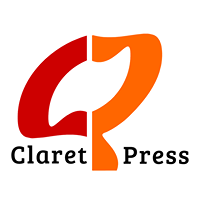‘To cut a long story short’ (Slang) Idiom, meaning to make only the final point in a long story.
An elegant and cultured lady of my acquaintance, now dead, coined the inversion of that slang phrase, when describing the tendency of her son to  elaborate on any tale, to the extent that he exasperated his listener. I thought of her when speaking recently to the owner of a small publishing imprint, not because my companion was too loquacious, far from it, she was completely charming and fun, but because we were discussing, amongst other things, the length of books.
elaborate on any tale, to the extent that he exasperated his listener. I thought of her when speaking recently to the owner of a small publishing imprint, not because my companion was too loquacious, far from it, she was completely charming and fun, but because we were discussing, amongst other things, the length of books.
An editor in the industry for thirty-five years, she decided to set up Claret Press as a riposte to modern publishing when she learned that a major publisher was making decisions about what to publish based on data mining information from an IT engineer. We all know how databases are collected and then mined to tell us what we want before we know that we want it, but here was an example of someone who knew nothing about books setting the parameters to determine which hard-working author got published and who got the rejection letter. The publisher looked for a specific type of book, with a specific type of protagonist, stipulating age, location, purchasing habits, etc.. If the manuscripts submitted didn’t meet those highly specific requirements, however good they were, they weren’t given a look-in.
 Romance is still the highest selling genre – witness the re-launch of the Mills & Boon imprint – and it sells to women, so I can understand some aspects of this process, but age, location and purchasing habits? This really is fiction by numbers.
Romance is still the highest selling genre – witness the re-launch of the Mills & Boon imprint – and it sells to women, so I can understand some aspects of this process, but age, location and purchasing habits? This really is fiction by numbers.
Identifying the next best seller is, if truth be told, something of a lottery and the big publishing houses will resort to anything which purports to de-risk the investment in a book. Often, though not always, what results is a mediocre book, while original, insightful novels go unpublished. It was a determination to do something about this state of affairs which prompted Katie to set up Claret Press.
But back to length of books. Publishers do have certain benchmarks ( though there will always be exceptions ) and one is that YA fiction, aimed at 12 to 14 year olds, should be about 40,000 words long. So, I wanted to ask, what about The Hobbit – at 368 pages this is more like double that? Likewise Northern Lights, the first in the, phenomenally successful ( and very good ) Phillip Pullman His Dark Materials trilogy which is 448 pages? Yet a quick skim through Amazon’s Young Adult section. Historical, Medieval ( because I have a personal interest ) shows rather a lot of books, but by no means all, at about 225 pages, which gets much closer to the 40,000 word benchmark.
to 14 year olds, should be about 40,000 words long. So, I wanted to ask, what about The Hobbit – at 368 pages this is more like double that? Likewise Northern Lights, the first in the, phenomenally successful ( and very good ) Phillip Pullman His Dark Materials trilogy which is 448 pages? Yet a quick skim through Amazon’s Young Adult section. Historical, Medieval ( because I have a personal interest ) shows rather a lot of books, but by no means all, at about 225 pages, which gets much closer to the 40,000 word benchmark.
Currently I am busy writing the sequel to Reconquista ( which was approximately 83,000 words ) and it is going to come in at about the same length if not longer. Hmmm. If I want to pitch this to a publisher, Katie suggested, I could do worse than repackage the two longer books as four shorter ones? To create a series? Food for thought, though not something I’m thinking about right now. Maybe in future….
If you enjoyed reading this article you may also enjoy Warp & Weft How does a book sound? Resurrection & How to do it Plots & Meta-plots


 RSS – Posts
RSS – Posts
One response to “To Cut a Short Story Long”